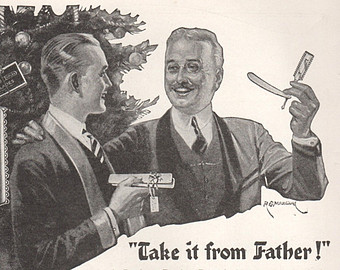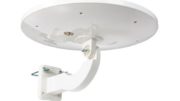Maybe you’ve heard the term before. If you haven’t, it refers to people who don’t want to ditch cable TV completely, but who choose to cut their cable bill to the absolute minimum. These are people who don’t feel comfortable using an antenna for local channels or who have a need for a specific channel that isn’t available online.
The cord shaver much more likely to be a Gen-Xer or Baby Boomer who is still tied to television the way it was when he grew up, as opposed to a millennial who maybe doesn’t have any ties to traditional TV. While cord-shaving isn’t as threatening to the TV establishment as out-and-out cord cutting, it’s still a threat, especially to companies that give away a lot of equipment in order to entice customers.
Companies like DIRECTV that routinely offer full-featured DVRs and receivers for free to their customers do so because their research shows that if people have those expensive boxes, they’re more likely to upgrade to a more expensive programming package. If that stops being true, these companies will probably stop bundling expensive equipment into every install and that means fewer free upgrades for everyone.
Cord shaving has come about largely because of the huge number of channels today with no more than one or two “halo” shows. What would AMC be today without The Walking Dead? Where would HGTV be without House Hunters? Increasingly, people care less and less about networks and more about shows, and they’re finding that they can get the relatively small number of shows they want through Hulu, iTunes, Google Play or Amazon. This makes it harder to justify jumping up to an $80 or $90 package just to get a bunch of channels that hold no interest for you.
While it seems like cord-shaving is bad for everyone, it’s not. It’s transformative, that’s for sure. It’s something that’s going to change the way we view TV, but that’s not a bad thing. The cord-shaving phenomenon could lead to a much more a-la-carte approach to channel pricing, where potentially you could build your own bundle much as Verizon is doing now. Most folks would probably be happy to choose just twenty channels out of the 200 they have access to if there was a price benefit. On the other hand, it could mean an end to subsidized equipment. We’re already seeing that the “free phone” is more or less a thing of the past now and maybe the free DVR will follow it. That could lead to more choice in the marketplace, where a smart company like DIRECTV might offer several DVR choices to people who are willing to pay more. Once upon a time they did this and they only stopped in order to offer the same free DVR to everyone.
If you’re considering cord-shaving, it can be an excellent way to dip your toes into the world of streaming without leaving traditional pay-tv behind forever. You may find that the programs you want are more expensive than you thought and retreat back to a full-price package, or you may discover that there’s a whole world out there, both online and offline, that might just be worth your consideration.





